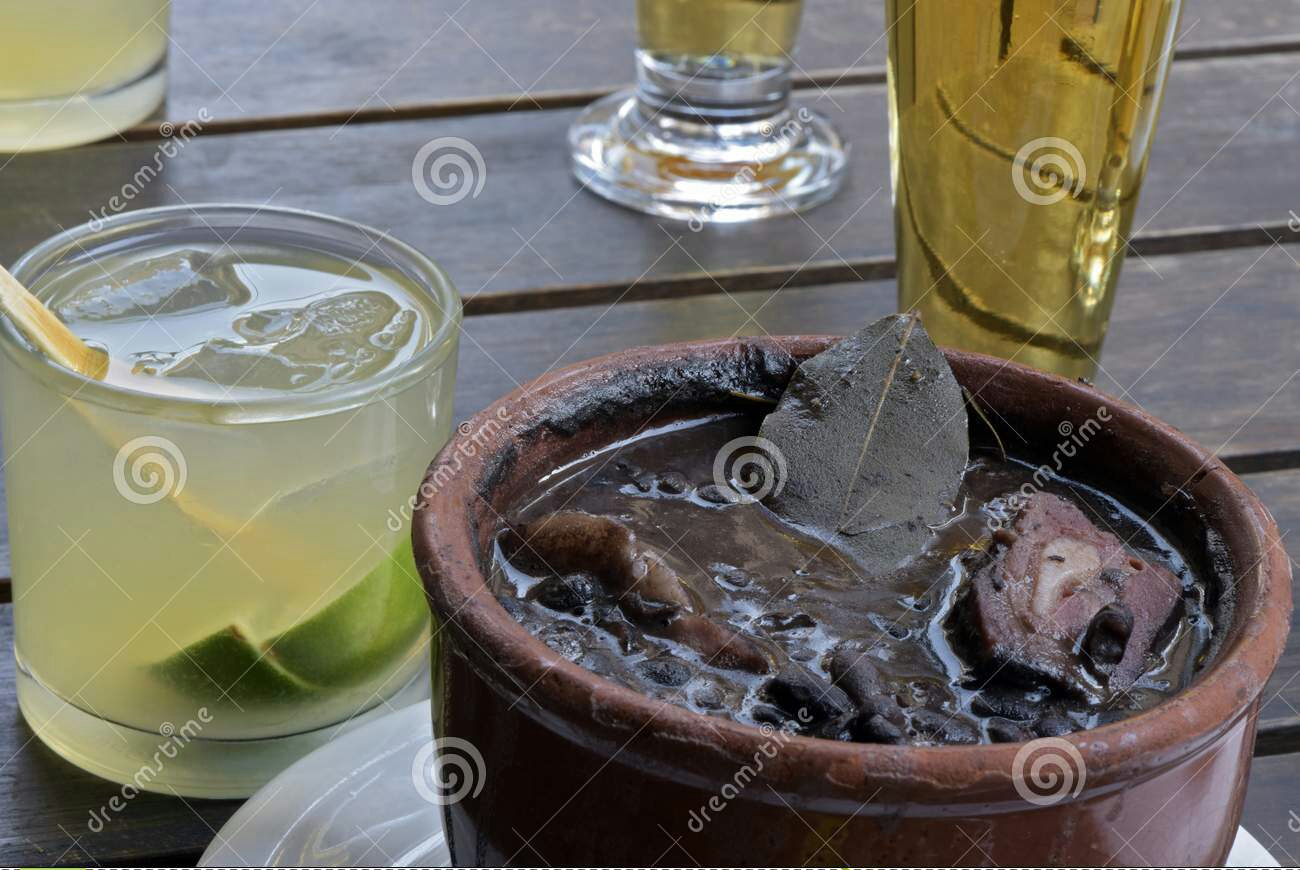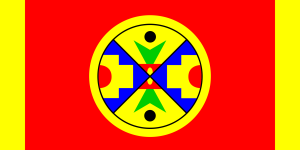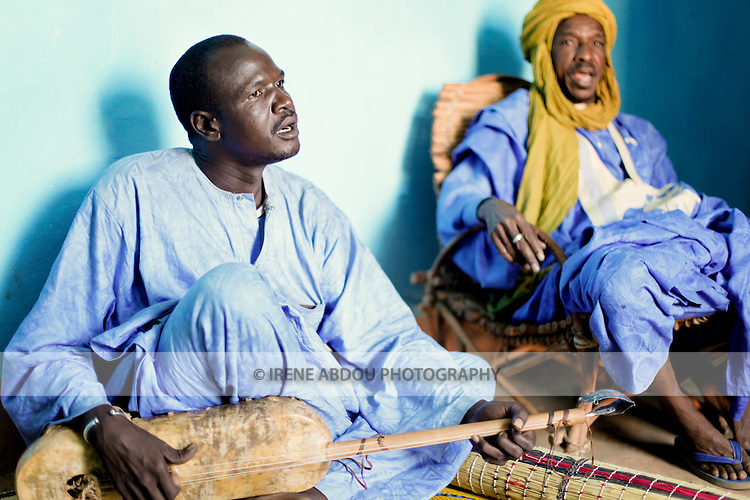“You whose day this is,
make it BEAUTIFUL
Get out your rainbow colors,
that it may be beautiful.”
~Nekoosa Indian Poem
Latest Entries »
Happy Holidays Everyone,
Arose N Daghetto here. I just want to take this time to thank you all for visiting Literature Voodoo over the years. I am deeply grateful to everyone who supported my blog in the past and in these recent years. Thank you so much for all your likes, your follows, your shares, your visits and the kind comments that you posted. I see you and I appreciate you dearly.
We’ve all been through a lot this year, haven’t we? It’s been no joke at all. But truth be told, you are strong. You made it this far and you’re still standing. We’re still standing. Better days are ahead of us. Keep hanging in there regardless of how bad the news gets. Hold on tighter to the hands of those around you who you love and keep you going through this dark journey. We’re approaching the light soon. It’s coming, trust that it is. I know it seems like it’s never going to get better but it will. It will. I know it seems to be taking forever but just like all good things eventually come to an end so does the bad. So this too will come to an end eventually. You will make it through this pandemic and whatever else you might be struggling to get through in your life. Keep holding on and don’t lose faith. I believe in you.
Lastly, I am back to working on new articles and other material for this blog. I am working on trying to expand Literature Voodoo from a blog to a website and in the very near future I will be setting up a Youtube channel. Because I see you all out there and your support in my notifications and stats, I want to give you more and hopefully connect with you all more. My supporters deserve more.
In the meanwhile, I will be posting new articles. You can expect a new posting here by January 11th 2021.
Sending warm wishes of love and hope to each in every one of you out there. Again, thank you for visiting and supporting my Literature Voodoo blog. Much respect and blessings to you all. ❤✌🖒
Sincerely,
Arose N Daghetto
Creator and Writer of the Literature Voodoo Blog

Feijoada: Brazil’s Highly Celebrated Dish
Written By Arose N Daghetto for LiteratureVoodoo blog
If you decide to visit Brazil one day, it doesn’t matter what region you visit, you can’t leave Brazil without tasting feijoada.
Ok, you can leave but you shouldn’t. It would be sad if you didn’t try feijoada during your visit to Brazil or at least a local Brazilian restaurant, if you have one in your state. And if you are a vegetarian or vegan, eh, you gotta do what you gotta do to satisfy your eating requirements. I understand I have to make you an exception. 😉
What’s the big deal about feijoada, you may ask? Feijoada is the national dish of Brazil. Brazilians love this tradional dish and take great pride in cooking it, eating it and serving it to their friends and loved ones.
Feijoada (pronounced, fehy-jwah-dah) is derived from the Portuguese word feijão, meaning beans. It is a dish most Brazilians would enjoy on any day of the week. However, you will typically find a large bowl of this savory deliciousness on the table of any Brazilian home during a special occasion or on a Saturday. Like in America, Fridays used to be Fish and chips in many restaurants and diners (or fish fry back in the day in many traditional Black southern homes)*, for Brazilians, Saturday is Feijoada day!
What Is Feijoada Exactly?
Feijoada is stewed beans, or more commonly defined, bean stew. It’s beans usually flavored with cuts of pork. Sometimes beef is added for a more in depth taste. The meats are a combination of fresh meats and dried meats, also known as carne seca.
In a nutshell, this is what feijoada consists of, with the exception of foods that accompany the finished dish:
Beans+ cut meats+ vegetables= Feijoada
Making feijoada can be a labor of love. A lot of time and preparation is put into making the dish. A lot of rising and cleaning the meats and vegetables, a lot of cutting the boneless meats down into cubes, a lot of inspecting the beans for stones and other inedible particles. There will be a lot of pots on the stove and a lot of multitasking all while making sure you don’t overcook any thing. And after you finish your labor of love, there will be a lot of pots, containers and dishes piled up in the kitchen sink singing your name. But the pay off? Heaven in a bowl with plenty to share and it’s economical because if you make a big pot of it, you’ll have plenty of leftovers for another meal or two!
The Stewed Beans With Meat Diaspora aka Beanophone
Okay, so there are no such terms, but both terms are perfect for describing the many faces stewed beans with meat have taken in kitchens around the world for many generations.
In today’s impatient world, you can find many shortcut versions to this recipe on the internet. Granted, some of these recipes will give you a taste that might fairly be close to the traditional feijoada. You will have a great dish in half the time and work with lots of flavor. However, none of these recipes will hold a candle to the authentic, high quality taste that you would get when it’s made from scratch. It won’t taste like it came from one’s Brazilian grandmother or great grandmother’s kitchen.
Every home cook has her or his own way of making Feijoada. Each family has their own little accent or technique to making their feijoada based on the recipe handed down to them by their elders. The standard taste and texture, however, remains true to the typical traditional recipe. For example, some families make their feijoada using fresh meats like pork or beef ribs or a ham shank along with dried (i.e. cured) meats like smoked bacon, or linguiça**. Some might substitute the smoked bacon with fresh bacon or ham hocks instead of pork ribs. In other families, feijoada is cooked more in the way the African slaves cooked theirs by using pig ears, pig feet, and pig tails.
While the beans are cooking on the stove top, the meats are boiling in a separate large soup pot. The meat is boiled to reduce some of the salt content. Because pork is a very salty meat, especially when cured, using such large quantities of it in a dish like Feijoada without soaking or parboiling the pork can overpower the dish. It can rob one’s ability to savor an even balance of flavors from all of the stew’s ingredients that you will get when it’s cooked right. Not to mention if you have high blood pressure or cholesterol issues, you’ll probably be playing Russian Roulette with your life trying to this dish! For the sake of your health, you might want to skip this meal altogether. But if you still want to experience this taste of Brazil somehow then you can modify it with poultry or a low sodium pork (as low sodium as possible). Also, be careful of the portions. More beans, herbs and seasonings, lesser meat. However you can add or swap the meat for smoked turkey or meat substitutes, like meatless like tempeh or seitan, meat crumbles, meatless sausage or bacon. For women, I recommend you find a meat substitute that is soy free or if you use a meat substitute with soy, make sure it is the organic soy as soy can reap havoc on women’s estrogen and other hormone levels which can possible cause breast cancer or cancer on other parts of the reproductive organs if consumed in excess or cooked on high heats especially. Of course using meat substitutes will not be traditional feijoada, even if mixed in with lesser amounts of the traditional meats used in the dish…when consumed in moderation it should be fine. I’m only speaking this moderation for those who might have serious health conditions which limits them from enjoying such a savory delicious dish like feijoada. So this is only a suggestion for those with diet restrictions, don’t throw a spoon at the gringa! 🙅
Feijoada in other Lusophone countries…
• In Portugal, the Portuguese have a similar dish to Brazil’s Feijoada. Their bean dish is called called Caldo (KAHL-doo in European Portuguese and in Portuguese speaking countries in Africa)…. KOW-doo in Brazilian Portuguese).
• In Cabo Verde (Cape Verde) they have a similar dish as well. Cachupa (Kah-CHOO-pah) a sausage stew which reminds me of feijoada and consists of beans as well. Cachup is the national dish of Cape Verde.
• Sometimes called, Machup (Mah CHOOP)which I have had and it tastes very similar to a soup my Mom used to make for us growing up every Thursday for dinner. The soup had a tomato base, ham hock or short rib, pinto beans,fava beans and mixed vegetables, My niece’s father who is from Praia (pronounced PRY-yah) once tasted my Mom’s soup and his face lit up. He said, “This is Machup! The only thing missing is the greens.” As in chopped collard or kale, for example.
• In Angola they also eat feijoada. But they also have a variation of this soup made with fish instead of pork called Calulu De Peixe (kah-LOO-loo duh PAY-shh). *** I believe Callaloo (kah-LUH-Loo) which is eaten in the Caribbean is a sister dish to this Angolan favorite, considering it is a fish stew consisting of similar ingredients just that the pronunciation is a little different.
• There is a bean soup that is not feijoada called Sopa de feijão (sow-PAH duh fehyj-OW) that originated in Portugal and is eaten there, Brazil, Angola and Moçambique. It consists of onions, tomato and small pasta like mini shells or risotto or elbow macaroni I am guessing here.
seitan a non lusophone country like Kenya, they have a stewed black bean dish called Njahi. Their dish is just beans and vegetables with perhaps some maagi seasoning among other things. And like Brazil, they serve the dish with a side of rice too but some Kenyans might serve it with chepati, which is a form of round flat bread that looks similar to a soft tortilla. Chepati is also eaten in india where it is originated from. To learn more about Njahi, feel free to check out the link and recipe video here: http://food.watsupafrica.com/news/kenyan-style-black-beans-stew-njahi-recipe/
In the United States, particularly the southern part of the United States like Alabama, Georgia, Louisiana, Mississippi, there is a mixed bean dish many generations of blacks enjoy that consists of a mix of beans- black eyed beans, pinto beans, kidney beans, fava beans, red beans, black beans, red lentils, dark lentils and splint peas stewed with onions, a ham hock (traditionally) or a smoked turkey leg or wings, and seasonings. I’m sure there is a name for the dish, but I never knew the name of it. I guess it is just called mixed bean stew or just mixed beans.
My mother who is from Alabama made this often when I was growing up, usually during the holidays like Thanksgiving, Christmas, New Years, a d Easter… but sometimes she would make it on a Sunday. She used to always make the family a big Sunday breakfast and a big Sunday dinner.
So there you have it. A run down on one of the best bean dishes ever created, feijoada and it’s many faces around the globe. A plate of lip smacking goodness. I encourage you to take a trip to Brazil in your kitchen and make a pot of feijoada with a side of queijo de pão (cheese bread) for an after dinner snack or a little Brigadeira (a Brazilian chocolate truffle)for desert. If you do try it, leave a comment and share your thoughts about it. And if you’re a Brazilian reading this, I would hope you share your thoughts about it too in the comments section especially since you are the masters of this yummy dish. I enclosed a few recipe links with this article for you to try! Much love and respect to you all. Enjoy!
• A sample feijoada (fehyj-WAH-dah) recipe:
http://flavorsofbrazil.blogspot.com/2010/03/recipe-feijoada-classic-traditional.html
∆ For those with dietary restrictions:
http://www.gourmetmum.tv/easy-recipes/turkey-feijoada
*again, you can omit/swap where you see fit as there is some chorizo in this recipe besides just the turkey…
• A sample pão de queijo (POW gee KAY-joo) recipe:
http://www.oliviascuisine.com/authentic-brazilian-cheese-bread/
• A sample brigadeiro (BREE-gah-DEHR-rroo) recipe:
http://authenticbraziliancuisine.blogspot.com/2014/03/brigadeiro-easy-to-make-delicious-and.html
Que legal, eh? Demais! 😋
Notes:
* In some homes it was Friday Night Fish Fry (such as in my home when I was growing up) a d in other homes it was Saturday day night fish fry.
** Linguiça is a Portuguese sausage made of cured pork, garlic and spices. The cut of pork used is the pork shoulder, a.k.a the pork butt. Although this part of the pig is a tougher meat, the meat is tenderized during the curing process prior to forming the linguiça.
Garlic and chili powder seem to have a leading role in linguiça’s layers of flavor based on- but of course not limited to- my tasting experience of the sausage. The chili powder and paprika is what helps give this sausage its reddish color when you cut into the meat. Cinnamon, cloves, allspice are among the other seasonings also contributing to the sausage’s distinctive flavor.
*** In Portugal and in countries that speak the European form of Portuguese such as Angola, Moçambique and Cape Verde (who speaks a Portuguese based creole known as Crioulo in Cape Verde), the words are more mashed, or drawn together in speech. So to pronounce a dish like Calulu de Peixe in European Portuguese speech, one might be pronounce it like, kah-LOO-lood’ pay-shh).
*****Disclaimer*****
All photos, drawings and writings belonging to other artists featured on this blog are solely for entertainment or illustrational purposes only. I do not own nor do I have any desire to take credit for any photos, artwork or writings not belonging to me. They all belong to the rightful owners of the work and the original websites they came from.
This excludes my own personal writings and photos I share on this blog which are always indicated and credited under my name and periodical company.


Word of the Week: WĀPĀKI
Written by: Arose N Daghetto for Literature Voodoo blog
Today’s word of the week comes from the Cree Indian tribe. Wāpāki means, tomorrow.
In the literal term, wāpāki means, when there is daylight. A flat, monotone sound accompanies the pronunciation of each word. That is, word for the Cree native, each syllable for the non native. Wā pā ki.
The Cree Indian tribe are among the highest in population of people belonging to the First Nations of Canada. Most Cree Indians live in Canada. However, many Crees have migrated south into the North America. Although there are Cree Indians living in other regions of the country, a larger population of them reside in the midwestern region such as Minnesota and Montana.
The origins of the American Indians trace back to Northern Asia and Siberia. Siberia is a part of Russia. Russia is often considered a part of Europe, although the continent is sandwiched between Europe and Northern Asia. This is not to say that the Russians are Asians, but they are close neighbors nonetheless.
The tribal languages spoken by the American Indians are primarily of Asian influence. Asian languages are tonal languages. If you listen to someone speak in Vietnamese, Chinese, Japanese, Taiwanese, etc., you will sort of hear a melody of tones and sounds in their speech. Each word is pronounced with either a high tone, neutral tone or low tone. Some words or sentences will take on different meanings depending on the tone you use. Therefore, it’s important for the foreign tongue learning an Asian language to keep this little factor in mind: What you say and how you say it to an Asian speaker is everything!
In some Asian languages, there are some words that don’t always have a strongly pronounced sound. For example, in Vietnamese, some words seem to have a sound that comes more from the throat or through clenched teeth or from the side of the mouth. This can be extremely challenging for the non native linguist or teacher to devise a phonetics table to guide students in these words! For some Asian languages, it seems like the best way for a casual learner is to focus more on the audio lessons. It’s a good way to get to know the surface of the language better by listening and emulating the sounds. Once you feel more acquainted with the language, you can then decide if you want to make a serious commitment by going deeper into really studying the language.
Back to the Cree language. Notice the long bar over the vowel sound (a). This is an indication to the speaker or reader that this letter, or vowel sound is to be pronounced with a long “a” sound. Also, in Cree, the letter “k” is pronounced like the letter “g”, so it has a “guh” sound.
Let’s try to say it, shall we?
Wā —> Waah (normal pitch monotone; slightly prolonged, flat sound)
Pā —> Paah (normal pitch monotone; slightly prolonged, flat sound)
Ki —> GEE (slightly raised pitch monotone; short, stronger sound)
All together now!
Wāpāki
(Waah paah GEE)
Tomorrow
(or the literal term, When there is daylight)
Wanna attempt it in a sentence? LOL… Come on, you’ll be fine…
Example:
Wāpāki nawāpamāw nitānis
Tomorrow I will see my daughter.
Wāpāki
Waah-paah-GEE
Nawāpawmāw
Nah-wow-PAH-mow**
Nitānis
nîh-TAAH-nîhs
**Note:
(-ow as in the English word “wow” or “now” when you sound out the word/syllable -mow and -wow)
Wāpāki nawāpamāw nitānis
Waah-paah-GEE… Nah-wow-PAH-mow**… nîh-TAH-nîhs
Tomorrow I will see my daughter.
To learn more about the Cree Indian tribe and their language please visit the YouTube channel #CreeSimonSays. He is a wonderful teacher and is so kind to share some of the language of his people to the world.
See you next week with another Word of the Week! 🙋

*****Disclaimer*****
All photos, drawings and writings belonging to other artists featured on this blog are solely for entertainment or illustrational purposes only. I do not own nor do I have any desire to take credit for any photos, artwork or writings not belonging to me. They all belong to the rightful owners of the work and the original websites they came from.
This excludes my own personal writings and photos I share on this blog which are always indicated and credited under my name and periodical company.
Arose N Daghetto is a poet, author and linguistic scholar. She is an independent researcher of language and culture in the African Diaspora. She also enjoys researching literary arts in Native American and Polynesian cultures.
Arose has a Bachelors in Communications from Rhode Island College with some post graduate studies in Professional Communications at Clarke University in Worcester, Massachusetts.
Her interest in studying languages began at age ten, which was the same age she began to pursue creative writing. At age 17, Arose was one of four selected winners for the George Houston Bass Play-Rites Festival, an annual contest that was held at Brown University’s Rites and Reasons theater in Providence, Rhode Island. She was the youngest winner in the contest’s history, which was open to college students and adults of all ages worldwide. This also made her the youngest contestant to submit a play to the theater while still being a student in high school. Her accomplishment earned her praises from school officials, the city mayor at the time and local college and university professors. She also received an award of recognition for her play from the city’s board of education.
Besides being the founder and creator of Literature Voodoo, Arose N Daghetto is also the founder of the privately owned Black Girl Down Publications, a small periodical company specializing in the literary arts, global social consciousness and the evolution of linguistics in today’s society.
Arose’s first book, “Anger Management: A Collection of Urban Poetry” was published in 2011. She is currently working on publishing her second book, “Inner City Lullabies”, a book containing four novellas.
To read more of Arose’s work, visit her personal blogs:
https://arosendaghetto.wordpress.com
and her newest blog and venture:
https://arosendaghettostoryteller.wordpress.com
Word of the Week: Griot
Pronounced: GREE- ût or, GEE-uht.
The u (û) has a short “uh” sound. It’s like you are trapping the “uh” sound in your throat so that it doesn’t flow out of your mouth. Think of the words “hut” or “gut” when sounding out the second syllable of this word.
A Griot is a storyteller originating from West Africa. They are bestowed the gift of communication by their elders which goes hand in hand with the gift of entertaining the masses. You will find numerous griots- authentic, home raised griots- in almost any part of West Africa.
These gems of the West African community are well versed in the literary arts. They are traveling performers whose stage is usually a space of land in their local village or a community miles away.
In addition to storytelling, griots inform their audience about history and genealogy. They are also preservers of tradition and heritage. They are musicians who exalts praise and worship while engaging in fellowship with their audience through the instruments they play and the songs they sing.
Griots are socially responsible people who are like ambassadors to the community. They are humble and kind souls in their own right. They are wise men (and women) who admonish their community through proverbial lessons. Griots are peacemakers who sometimes mediate on various issues or disputes. They are also brave people well skilled in defending and protecting their community when necessary.
Don’t be pursuaded by the glamorized images of griots you might see or hear about in western world. Becoming a griot is not easily obtained. It takes many years of training and development before the chosen successor can go out into the world with this gift. Training begins at a very early age by an elder in the family. This is how the gift, or tradition is passed down through the generations. Stories, history, certain musical instruments and traditional accounts are just some of the valuable things taught during the training.
Griots are also known by their alternative French name, Jali, or Jéli. The name has two different spellings but only one way of pronouncing it. DJEHY-lee. Think of the word fudge when pronouncing the J word in French, “djuh”…. “djehy”…. DJEHY-lee. French is the principal language spoken in many parts of West Africa.
See you next week with another word. 🙋
~Arose
Article written by Arose N Daghetto for Literature Voodoo blog
_______________________________
For more information on griots, please visit these sites:
http://www.seckoukeita.com/my-story/my-culture/
http://www.bucknell.edu/Documents/GriotInstitute/What is a Griot.pdf
*****Disclaimer*****
All photos, drawings and writings belonging to other artists featured on this blog are solely for entertainment or illustrational purposes only. I do not own nor do I have any desire to take credit for any photos, artwork or writings not belonging to me. They all belong to the rightful owners of the work and the original websites they came from.
This excludes my own personal writings and photos I share on this blog which are always indicated and credited under my name and periodical company.
Derek Walcott: A Poetic Genius
By: Arose N Daghetto for Literature Voodoo blog
Born in Saint Lucia in 1930, Derek Walcott was a poet whose writings thrived on challenging the human mind and social consciousness. His poetry unveiled the marriage between the beauty of the islands and its continual growing pains of post colonialism.
Walcott gave readers candid and sometimes dreamy perspectives of life through the eyes of Caribbean men and women. He paired his poetry with his artwork which further indulged readers with visuals of those perspectives. He enabled readers to breathe in the spirit of these characters. We get to walk in the characters’ shoes. We feel their love or their heartbreak. We experience their wins and grieve along with them during their losses. And because Derek Walcott’s work often included excerpts of his personal life experiences, we are given the opportunity to become acquainted with the man behind the poetry.
In Hilton Als’s tribute article to the late poet entitled, “Derek Walcott, A Mighty Poet Has Died” (The New Yorker, March 17, 2017), Als fondly recanted his interview with Walcott:
“I felt as though I had always known him- not known him, exactly, but seen him, been in his aura, his history…”
Als used many positive words to describe who Derek Walcott was. One of those words was complex. Although one might question how could saying a person is complex be positive, if you read his article (provided below)*, you will see where he meant it in a good way.
Derek Walcott was complex. He was complex in the sense of creativity and intellectualism. He was a poet, painter, playwright and journalist. Intellectually, he was a Nobel Prize laureate, a professor at Boston University, which is one of North America’s leading Ivy league schools. He was also the founder of the Boston Playwright Theater. Furthermore, he was honored by The Order of the Caribbean Community, The Order of Chivalry and The Most Excellent Order by Queen Elizabeth II, who elevated his name to Sir Derek Walcott. These are only some of the many credentials and high honors Walcott received during the course of his prestigious writing career.
Not enough people have heard about the genius known as Derek Walcott, especially those of the younger generation. I didn’t know who Derek Walcott was either. A beautiful friend I once knew introduced me to his poetry several months ago.
There is still more to learn about this poetic genius. A humble genius who often used his gift to mentor and advocate other upcoming writers. His poetry did more than just earn him a place on the elite list of world literature’s greatest writers of all time, it secured his place there. Like Chaucer, Homer and Shakespeare, Derek Walcott’s masterpieces should be on the syllabus of every middle school, high school and college English classes.
Derek Walcott wore many hats in his lifetime before and after he became a world renowned poet. The genius may be gone physically, but his voice will live on forever through every book he wrote and every legacy he left behind. Long live Derek Walcott. Long live Saint Lucia. Stay beautiful and never give up on your hard work for a better tomorrow.

“Doubt was his patron saint, it was his island’s,
the saint who probed the holes in his Saviour’s hands”
“(despite the parenthetical rainbow of providence)
and questioned resurrection; its seven bright bands.”
“Saint Thomas, the skeptic, Saint Lucia, the blind
martyr who on a tray carried her own eyes,”
“the hymn of black smoke, wreath of the trade wind,
confirming their ascent to paradise. “
~ Tiepolo’s Hound by Derek Walcott, 2000
_______________________________________
* Hilton Alt’s article:
https://www.newyorker.com/culture/culture-desk/derek-walcott-a-mighty-poet-has-died
*****Disclaimer*****
All photos, drawings and writings belonging to other artists featured on this blog are solely for entertainment or illustrational purposes only. I do not own nor do I have any desire to take credit for any photos, artwork or writings not belonging to me. They all belong to the rightful owners of the work and the original websites they came from.
This excludes my own personal writings and photos I share on this blog which are always indicated and credited under my name and periodical company.

“Ouai” (pronounced Ooo-wehy) means “Yeah” in French. It is an informal alternative to “Yes”. It is best used among people you know personally like friends and family. You might come off as rude or disrespectful if you answer someone you don’t know this way, like an elder, a customer or a teacher.
Example:
Hot Babe: Tu veux aller au cinéma ce soir ou pas?
(Do you want to go to the movies tonight or not?)
Badass Boyfriend: (Runs his fingers through his immaculate hair.) Ouai. (Yeah.)
Let’s say it together!
• Tu veux aller au cinéma ce soir ou pas?
(Too voo zah-lehy oh see-nehy-mah suh swah ooo pah?)
• Ouai.
(Ooo-wehy)
Now you have a new word to add to your everyday conversation! Have fun, impress your friends!
See you next week with another word…🙋
~Arose N Daghetto
*****Disclaimer*****
All photos, drawings and writings belonging to other artists featured on this blog are solely for entertainment and illustrational purposes only. I do not own nor do I have any desire to take credit for any photos, artwork or writings not belonging to me. They all belong to the rightful owners of the work and the original websites they came from.
This excludes my own personal writings and photos I share on this blog which are always indicated and credited under my name and periodical company.

What can you expect to see on the new and improved Literature Voodoo? Lesser poems. More cultural articles. More concise. It’s that simple.
• Articles will cover a variety of topics related to the literary arts. They will be engaging, entertaining and reader friendly.
• Profiles on language, spirituality, and other forms of entertainment from cultures around the world, especially those of the African diaspora
• Word of the week
• Writing tips and resources to help writers succeed further in their writing goals
• And more!
Here’s to breathing new life into this website. Sending positive enlightenment to every person this blog reaches.
Ase. 🙏
Stay tuned.
~Arose N Daghetto
*****Disclaimer*****
All photos, drawings and writings belonging to other artists featured on this blog are solely for entertainment and illustrational purposes only. I do not own nor do I have any desire to take credit for any photos, artwork or writings not belonging to me. They all belong to the rightful owners of the work and the original websites they came from.
This excludes my own personal writings and photos I share on this blog which are always indicated and credited under my name and periodical company.

Hola! Coucou! Bom dia! Bonjou/Bonswa! Bienvenue! Hello everybody! I see you out there. 👀
I’ve noticed an increase in people visiting Literature Voodoo lately. I want to say thank you for visiting my page. Thank you for the likes, shares and follows over the years. I appreciate your presence, even if you don’t comment or share. It means a lot that you took the time out of your day or night to stop by. 🙏
So, Koté ou yé?? Where are you, Arose N Daghetto??
Koté’m yé (Where am I)? Life happened. I developed a long term writers block which forced me to stop writing. I also became a caregiver/(volunteer) CNA to several important people in my life. As a result, I denounced being a writer because not only was I way too busy to write anything, I also fell out of love with writing. I didn’t want to be a writer anymore. I took all the notebooks of stories and poetry I wrote and packed them in a garbage bag. I pulled all my websites up and was about to hit the delete permanently button one by one when something stopped me. I was impelled to take a little more time to think things over before I got rid of everything.
A month later a poem came to me. I wrote the poem and posted it on my Facebook page. A few days later, a short essay. Then nothing for about three or four months. Then a short story came to me. Half way into my first short story came another.
I did some soul searching in between the people I’ve been caring for. I realized that the writer within was still very much alive and wasn’t ready to call it quits… at least for now. So today, little by little, I’m back to work. Back to my original first and only love.
I’ve been working on improving my writing, building my writing resume and working on new material. You will be seeing new things soon. Bigger and better things but more concise. I hope you stay tuned and come back again in the near future. 🙂
Ti prosima vez! Until next time… see you soon.
Much love,
Arose N Daghetto

*****Disclaimer*****
All photos, drawings and writings belonging to other artists featured on this blog are solely for general use or illustrational purposes only. I do not own nor do I have any desire to take credit for any photos, artwork or writings not belonging to me. They all belong to the rightful owners of the work and the original websites they came from.
This excludes my own personal writings and photos I share on this blog which are always indicated and credited under my name and periodical company.
MARACUJÁ (PASSIONFRUIT)
~Written By Arose N Daghetto
I’m sitting in the kitchen
holding the fruit of infatuation
Waiting for the one I love
To show up in the room
I speak in passionese to grandfather time
and all he says back to me is
tick…
tock…
tick…
tock…
Who will bite this fruit of infatuation
growing warm in my hand
should the man that I love
not come home tonight?
Can you tell me
my old and wise grandfather?
tock…
tick…
tock…
tick…
Precious grandfather
minister of parable thoughts
You’ve always been the sparrow
on my shoulder
during insomnia and quiet conversations
Come out of your silence, Grandfather
Talk to me
enlighten me
tick…
tock…
tick….
tock…
The big hand covered the little hand
In a reverent embrace
between grandfather’s polished eyes
They braced themselves
for the arrival of a new hour
and the official departure of another day
GONNNG….
GONNNG….
GONNNG….
Midnight drops itself in the chair
across from me
I don’t flinch at its laughter
nor the heckling hums of my refrigerator
I looked at Grandfather with Lois Lane eyes
longing for intervention
tock
tick…
tock…
tick….
Click-clack goes the door
Boom-boom goes my heart
Creak-crack goes the floor
and after a time capsule of silence
CRUNCH goes the maracujá
and her blood
down the sides of my wrist.
Poem (not pictures) © Copyright 2012 by Arose N Daghetto for Black Girl Down Publications. All Rights Reserved.
SAMBA: A BRAZILIAN AND INTERNATIONAL PHENOMENON©
By Arose N Daghetto
Did you know that Samba music and its dance was created by African slaves who migrated to the city of Salvador, Brazil, which is one of if not the largest population of Afro Brazilians? Samba is of several success story to come out of the African diaspora, for it is a culture that’s taken Brazil and the world by storm.
Samba came from humble beginnings, tracing back to the Salvador, Brazil. The city of Salvador is also known as Bahia (which means, “Bay” and is also called “The Bay of All Saints”, a place where not only Samba was born, but a place where Orixas and Candomblé religions were born. These religions are rich in Congolese, Yoruba, Togo, Nigerian, Ghanaian and Benin cultural influences from Africa. This is also where many of the African Slaves came from and this area of Brazil is one of the first places all African slaves were brought to before being dispersed to different parts of the South, Central and North America.
Salvador is also the birthplace of the famous Capoeira, which is a martial arts that combines dance and music. Capoeira was originally a self-defense mechanism the African slaves practiced to use against their slave masters. Capoeira was used by African warriors to prepare for war against rival tribes. Having such captured warriors among the community of slaves, they secretly used these moves to train one another for combat and protection. Capoeira involves kicks, head butting, acrobatics, leg sweeps, slapping, elbowing, punches all incorporated in dance.
Whenever the slave masters questioned their act, they explained it was simple form of dance and celebrating with each other. It didn’t take much to convince their masters how innocent and harmless the dance was. Perhaps to each other, who probably endured a few scrapes and bruises in their “harmless” dance.
Brazil continues to have highest population of African descendants, most of them live in lower middle class communities or Favelas, which is like African Americans who live the inner city, to put in a nice way or ghettos, to put in a not so nice way.
Afro Brazilian singer, Gilberto Gil once said in an interview that Afro Brazilians knew more about their African identity than those of African Americans, because done so well in preserving their cultural and religious identity. Slavery in Brazil had much more of an upper hand over their slave masters because they outnumbered their oppressors over time and was able to gain control over their freedom better than those African Slaves that populated the south-eastern regions of the United States. That’s a fascination discussion that I will have to get into further detail on in another blog.
Anyway Getting back to Samba music, other cultural influences helped to greatly diversify the Samba identity in Brazil such as the descendants of Portuguese, Spanish Italian and Native American. Today, there are many sub styles of Samba music, you got Jazz samba, rock samba, Samba R&B Samba, reggae Samba, hip hop Samba. The music is undeniably a euphoric experience. You can see the joy on the musicians faces as they work up a sweat beating those various percussions and strumming those various sized guitars. The singers are smiling, laughing, hypnotized by the intense rhythms and lyrics. It’s always a party anytime you hear the Samba. Even sad sambas makes you want to get up and dance! Samba is the antidepressant to the most depressed soul and hope to the pessimist.
As time and generations evolve, Samba takes on new and different faces in the music genre. In the more current decades, many Brazilians express their dislike for Samba music, claiming it’s old and out with the times. Kinda like Americans were with Disco music back in the late 1970’s. Nevertheless, the number of those who love Samba music is outnumbered in the nation and many artists work hard to keep the beauty of this music genre very much alive. Samba schools have been established to teach people about Samba music, dance, and culture.
Samba has long been enjoyed by not only Brazilian natives, but Americans, French, Caribbeans, Germans and others around the world. Samba remains to be the Face of Brazil’s attractive and sensuous identity. So whenever you’re feeling sad and can use a little pick-me-up, or if you feel like listening to something culturally invigorating, pull up a Samba or Bossa playlist on your Pandora radio. Once you listen to it, you will never look at music the same again!
Article (not pictures) © Copyright 2012 by Arose N Daghetto for Black Girl Down Publications. All Rights Reserved.









